Selecting elastic webbing for products requiring sustained performance over years demands understanding both material capabilities and manufacturing expertise that can optimize your design from the earliest development stages.
Yes, elastic webbing can serve as a reliable long-term solution when engineered with high-quality synthetic materials and appropriate protective treatments, maintaining 85% or more of its original elasticity after years of use. Synthetic options with protective coatings demonstrate 3x longer lifespan than natural alternatives while providing consistent stretch recovery and dimensional stability.
Discover how engineering consultation optimizes elastic webbing specs with material insights, performance data, and guidance on stretch and cost trade-offs.
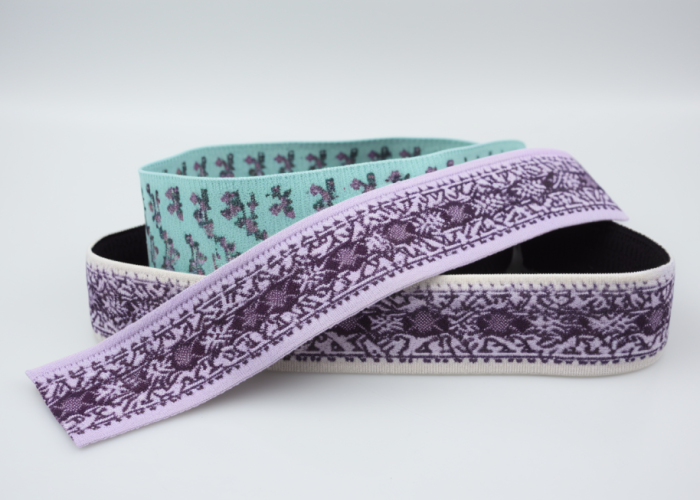

Webbing manufacturing expert with 15+ years of experience helping product developers build high-performance straps for industrial, medical, and outdoor use.
Engineering consultation can improve elastic webbing performance by 20–30% through precise material selection, optimized construction techniques, and targeted surface treatments—tailored to your application. Early collaboration with manufacturing experts helps identify design enhancements, evaluate trade-offs, and avoid common performance issues before tooling and production begin.
Key Benefits at a Glance:
Design collaboration begins at the concept stage, where our engineering team evaluates key factors such as required elongation, recovery rate, fatigue cycles, and environmental exposure. We recommend solutions that balance performance and cost—such as tubular webbing for enhanced stretch retention, or elastomeric fiber blends that resist UV degradation without the need for overengineering.
Real-world use cases demonstrate the value of early consultation. In one orthopedic brace application, we increased recovery efficiency by 25% using heat-set polyester-elastomer combinations. For an automotive safety harness, edge-fraying was eliminated using precision-welded finishes, outperforming traditional stitched edges under vibration and wear conditions.
Prototype and testing support eliminate downstream risk. We offer material samples across a range of specs for comparative analysis, enabling fine-tuning based on tensile strength, stretch profile, or environmental compatibility. This proactive development approach ensures your final product meets performance goals while reducing rework and sourcing costs.
Elastic webbing durability depends on three critical factors: synthetic fiber composition, weave construction density, and protective surface treatments, with high-quality combinations maintaining 85-90% of original performance after 5+ years of regular use. Premium synthetic materials like polyester-elastane blends resist degradation significantly better than natural rubber alternatives, while proper construction techniques ensure consistent stretch recovery throughout the product lifecycle.
Key Durability Factors at a Glance:
Material composition forms the foundation of long-term durability. Synthetic elastomeric fibers like spandex or elastane integrated with polyester or nylon carrier threads provide superior resistance to environmental factors compared to natural rubber. These synthetic combinations maintain elasticity through temperature fluctuations, resist UV-induced brittleness, and show minimal degradation from moisture exposure or chemical contact.
Construction quality directly impacts performance longevity. High-density weave patterns distribute stress more evenly across the webbing width, preventing localized fiber failure that leads to premature breakdown. Heat-setting during manufacturing improves elastic memory, ensuring consistent stretch recovery even after thousands of use cycles. Edge treatments like ultrasonic welding or specialized binding prevent fraying that can compromise structural integrity.
Protective treatments extend service life in demanding environments. Polyvinyl or silicone coatings create barriers against moisture, chemicals, and abrasion while maintaining flexibility. These treatments are particularly valuable for outdoor applications, medical devices, or industrial uses where exposure to harsh conditions is unavoidable. Quality manufacturers validate durability through accelerated aging tests and cycle testing to ensure real-world performance matches specifications.
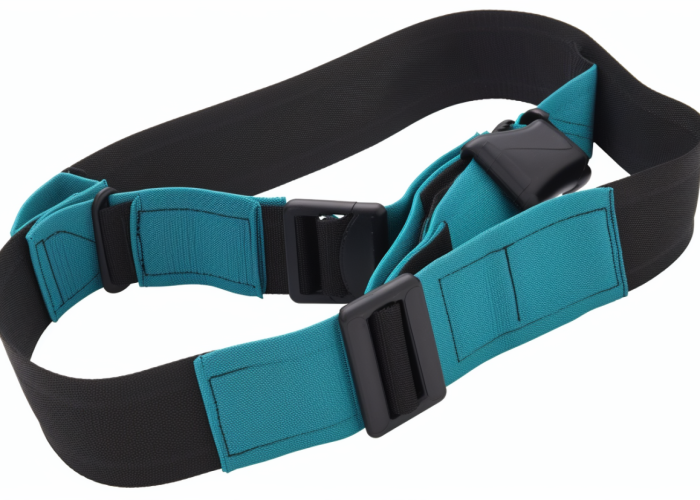
Synthetic materials extend elastic webbing life by 200-300% compared to natural alternatives, while protective treatments like polyvinyl and silicone coatings add another 40-60% improvement in harsh environmental conditions. Modern synthetic fibers resist the primary failure modes that affect natural rubber—UV degradation, oxidation, and temperature-induced brittleness—while maintaining consistent elastic properties throughout extended use.
Material and Treatment Advantages at a Glance:
Synthetic fiber advantages stem from their molecular structure and manufacturing consistency. Polyester provides excellent UV resistance and dimensional stability, while elastane (spandex) maintains elastic properties without the oxidation issues that plague natural rubber. Nylon integration adds superior tensile strength and abrasion resistance, making synthetic blends ideal for high-wear applications like safety equipment, medical devices, and sporting goods.
Protective coating technologies address specific environmental challenges. Polyvinyl treatments create flexible barriers against moisture penetration and chemical exposure, particularly valuable for marine applications or industrial environments. Silicone coatings excel in temperature-extreme applications, maintaining flexibility and elastic properties from -40°F to 200°F while providing excellent release characteristics for medical or food-contact applications.
Application-specific treatment combinations optimize performance for targeted use cases. Outdoor sporting goods benefit from UV-stabilized treatments combined with antimicrobial properties to prevent degradation from sweat and environmental exposure. Medical applications utilize biocompatible silicone treatments that resist sterilization cycles while maintaining consistent elastic properties. Industrial applications often require chemical-resistant coatings combined with enhanced abrasion protection for extended service life in demanding environments.
Manufacturing quality factors—including fiber tension control, heat-setting precision, and edge finishing techniques—can improve elastic webbing longevity by 40-50% compared to standard production methods. Consistent manufacturing processes ensure uniform stress distribution, proper elastic memory formation, and structural integrity that maintains performance characteristics throughout the product’s intended service life.
Critical Manufacturing Quality Elements at a Glance:
Weaving process control determines fundamental webbing characteristics. Consistent fiber tension during the weaving process prevents the formation of weak spots that can lead to premature failure under cyclic loading. Proper loom setup ensures uniform distribution of elastomeric fibers throughout the webbing width, maintaining consistent stretch characteristics across the entire product. Temperature and speed control during weaving affects fiber orientation and bonding, directly impacting long-term performance.
Heat-setting and curing processes optimize elastic memory and protective treatment adhesion. Controlled heat-setting cycles align molecular structures within elastomeric fibers, improving recovery characteristics and preventing permanent deformation under load. Proper curing schedules for protective coatings ensure maximum adhesion and durability, preventing delamination that can compromise environmental protection and lead to accelerated degradation.
Quality assurance throughout production validates performance expectations. Multi-stage testing includes raw material verification, in-process monitoring of critical parameters, and final product validation through tensile testing and dimensional inspection. This systematic approach identifies potential issues before they affect finished products, ensuring consistent performance characteristics that meet long-term durability requirements. Documentation of quality control results provides traceability and supports performance warranties.
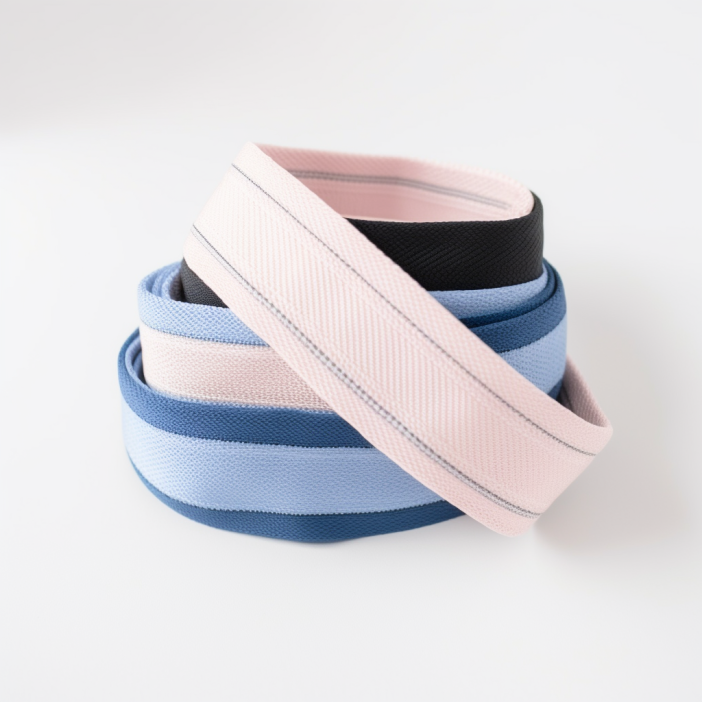
Environmental factors—UV exposure, temperature cycling, moisture, and chemical contact—can reduce elastic webbing performance by 30-70% over 2-5 years depending on material selection and protective treatments. UV radiation causes the most significant degradation in unprotected materials, while temperature extremes and moisture exposure accelerate chemical breakdown processes that affect elastic recovery and tensile strength.
Environmental Impact Factors at a Glance:
UV radiation represents the primary environmental threat to elastic webbing longevity. Ultraviolet energy breaks down polymer chains in both natural and synthetic materials, causing brittleness, color fading, and loss of elastic properties. Unprotected natural rubber can lose 15% of its elasticity annually under moderate UV exposure, while high-quality synthetic materials with UV stabilizers limit degradation to 3-5% per year. Geographic location and application exposure levels significantly impact degradation rates.
Temperature fluctuations and moisture exposure create synergistic degradation effects. Repeated heating and cooling cycles cause expansion and contraction that stresses polymer structures, while moisture penetration accelerates chemical breakdown processes. Materials exposed to freeze-thaw cycles or high-humidity environments require specialized formulations and protective treatments to maintain performance. Temperature-stable synthetic blends with moisture-barrier coatings significantly outperform standard materials in challenging climates.
Chemical exposure and mechanical wear compound environmental damage. Industrial applications involving exposure to cleaning chemicals, saltwater, or petroleum products require chemical-resistant treatments and material selection. Mechanical wear from abrasion or repeated flexing creates surface damage that allows deeper environmental penetration, accelerating overall degradation. Proper material selection and protective treatments matched to specific environmental conditions can extend service life by 200-300% compared to generic solutions.
Comprehensive testing should provide tensile strength values, cycle fatigue data, environmental resistance metrics, and elastic recovery measurements that validate performance claims and support design decisions. Professional-grade testing generates specific data points including breaking strength (typically 2,000-15,000 lbs for elastic webbing), fatigue life (10,000-1,000,000+ cycles), and recovery rates (85-95% after standard loading) that enable informed material selection.
Essential Testing Data Points at a Glance:
Mechanical testing provides fundamental performance characteristics essential for design validation. Tensile strength testing determines both ultimate breaking strength and working load limits, typically showing values from 2,000-15,000 pounds depending on webbing width and construction. Elastic recovery testing measures the material’s ability to return to original dimensions after loading, with quality elastic webbing maintaining 85-95% recovery after standard test cycles. These baseline measurements enable proper safety factor calculations and performance predictions.
Fatigue and environmental testing predict long-term service life under real-world conditions. Cycle fatigue testing subjects samples to repeated loading at various percentages of breaking strength, generating data on expected service life under different use patterns. Environmental testing includes UV exposure equivalent to years of outdoor use, temperature cycling from -40°F to 200°F, and chemical resistance validation. This testing typically requires 2-4 weeks for comprehensive results but provides critical data for demanding applications.
Accelerated aging and specialty testing address application-specific requirements. Heat aging, ozone exposure, and hydrolysis testing simulate long-term environmental effects, providing projected service life data under specified conditions. Specialized testing may include biocompatibility validation for medical applications, flame resistance for safety equipment, or electrical properties for technical applications. Quality manufacturers provide detailed test reports with statistical analysis and confidence intervals, enabling evidence-based design decisions and regulatory compliance validation.
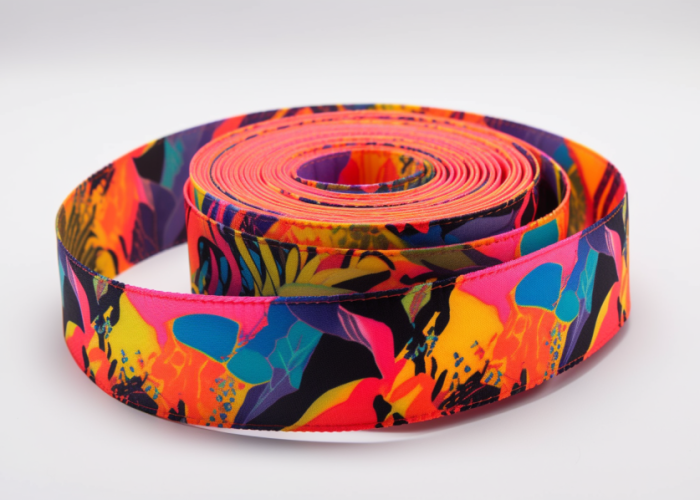
Cost-performance trade-offs in elastic webbing typically range from 40-150% price premiums for high-performance materials that deliver 200-400% longer service life and superior environmental resistance. Standard synthetic elastic webbing costs 20-40% more than natural rubber alternatives but provides 3x longer service life, while premium materials with specialized treatments command higher prices but reduce total cost of ownership through extended durability and reduced replacement frequency.
Cost-Performance Comparison at a Glance:
Material selection significantly impacts both initial cost and long-term value. Standard polyester-elastane blends cost 20-40% more than natural rubber but deliver 3x longer service life through superior UV resistance and dimensional stability. Premium synthetic formulations with enhanced elastomeric content and specialized fiber treatments command 50-80% higher prices but provide 400-500% performance improvements in demanding applications. These investments often reduce total cost of ownership by 40-60% when replacement frequency and downtime costs are considered.
Protective treatments and manufacturing upgrades offer measurable cost-benefit ratios. Polyvinyl or silicone coatings add 15-30% to material costs but extend service life by 40-60% in harsh environments, providing positive return on investment within 2-3 years for most applications. Heat-setting processes and precision edge finishing increase manufacturing costs by 10-20% but significantly improve performance consistency and reduce field failures. Custom formulations justify 100-150% premiums when optimized for specific environmental or performance requirements.
Volume considerations and lifecycle analysis guide optimal selection. High-volume production enables 20-35% cost reductions through manufacturing efficiency and material purchasing advantages, making premium materials more cost-effective for large-scale applications. Lifecycle cost analysis should include replacement frequency, labor costs for installation/maintenance, potential downtime expenses, and warranty implications. Applications with difficult access, safety-critical functions, or high replacement costs often justify premium materials despite higher initial investment.
Alternative webbing solutions become necessary when elastic webbing’s inherent stretch characteristics conflict with application requirements, such as precision positioning systems, high-temperature environments above 200°F, or applications requiring minimal elongation under load. Non-elastic alternatives like polyester or nylon webbing provide superior dimensional stability, while specialty materials offer enhanced chemical resistance or extreme temperature performance that elastic webbing cannot match.
Alternative Solution Indicators at a Glance:
Dimensional stability requirements often eliminate elastic webbing from consideration. Applications requiring precise positioning, minimal stretch under load, or consistent dimensions throughout the service life benefit from polyester or nylon webbing alternatives. These materials provide <2% elongation under working loads compared to 15-30% for elastic webbing, making them ideal for structural applications, load-bearing systems, and precision equipment. The trade-off involves losing shock absorption and conformability that elastic webbing provides.
Environmental extremes exceed elastic webbing’s performance envelope. Continuous exposure above 200°F degrades most elastomeric materials, requiring high-temperature alternatives like aramid (Kevlar) or specialized polyester webbings. Chemical environments involving strong acids, bases, or organic solvents may require PTFE-coated or all-fluoropolymer webbing solutions. These specialty materials command significant cost premiums (200-500% higher) but provide necessary performance in extreme conditions.
Cost-benefit analysis may favor simpler alternatives when elastic properties aren’t essential. Applications where stretch characteristics don’t provide functional benefits—such as simple tie-downs, basic restraints, or decorative uses—often achieve better value with standard polyester or polypropylene webbing. These alternatives cost 30-50% less than elastic webbing while providing adequate strength and durability for non-elastic applications. The decision should balance initial cost savings against potential functional limitations and replacement frequency.
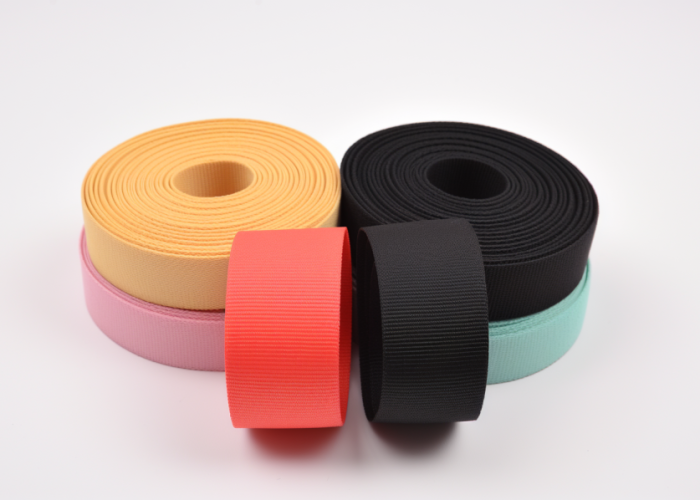
Elastic webbing serves as an effective long-term solution when properly engineered with synthetic materials, protective treatments, and quality manufacturing processes. Success depends on matching material specifications to application requirements, environmental conditions, and performance expectations. Early engineering consultation optimizes design decisions and prevents costly redesigns. Contact us to explore manufacturing solutions tailored to your elastic webbing requirements.
Yes, elastic webbing loses 10-15% of its original strength over 5+ years of regular use. High-quality synthetic materials maintain 85-90% of original performance when properly manufactured and maintained, significantly outperforming natural rubber alternatives.
Heat treatment improves elastic memory but cannot prevent environmental degradation from UV, moisture, or chemicals. While heat-setting enhances dimensional stability, comprehensive durability requires protective coatings and appropriate material selection for specific environments.
Proper maintenance extends elastic webbing life by 40-60% through regular cleaning, UV-protected storage, and load management. Replace webbing when elasticity drops below 80% of original performance or visible damage appears.
Repeated stretching gradually reduces elastic recovery, with quality webbing maintaining 85-95% recovery after 10,000 cycles. Exceeding recommended working loads accelerates degradation and can cause failure within months rather than years.
UV radiation, temperature cycling, and moisture are primary causes of degradation, reducing performance by 30-70% over 2-5 years. Treated synthetic materials limit UV degradation to 3-5% annually compared to 15% for unprotected materials.
Professional manufacturers use multi-stage testing including material verification, tension monitoring, and final tensile testing to ISO standards. Quality control includes dimensional inspection, recovery testing, and documentation providing traceability and performance warranties.